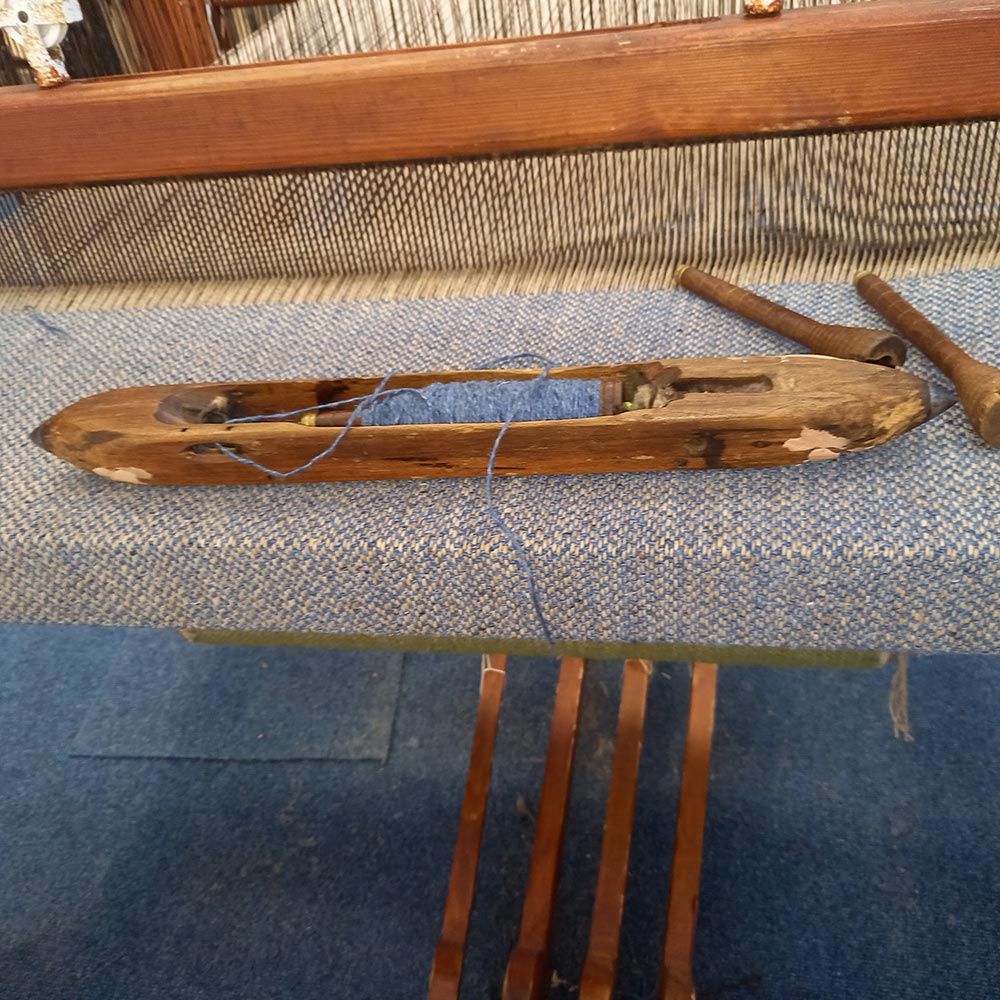Warping
Before setting up the warp, the appropriate yarn is chosen based on the desired fabric characteristics.
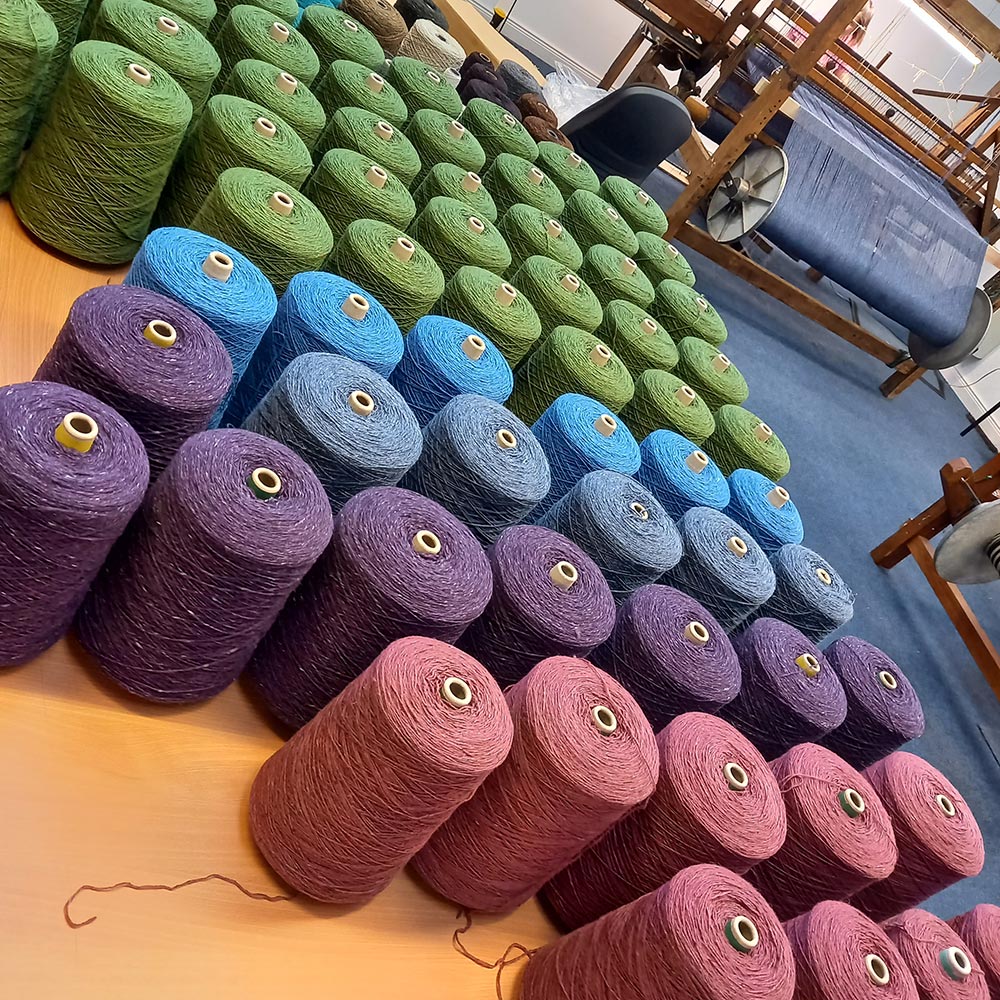
Warp threads must be measured and arranged in parallel to form the desired fabric width and length. Threads are wound onto a warping frame before being transferred onto the warp beam.

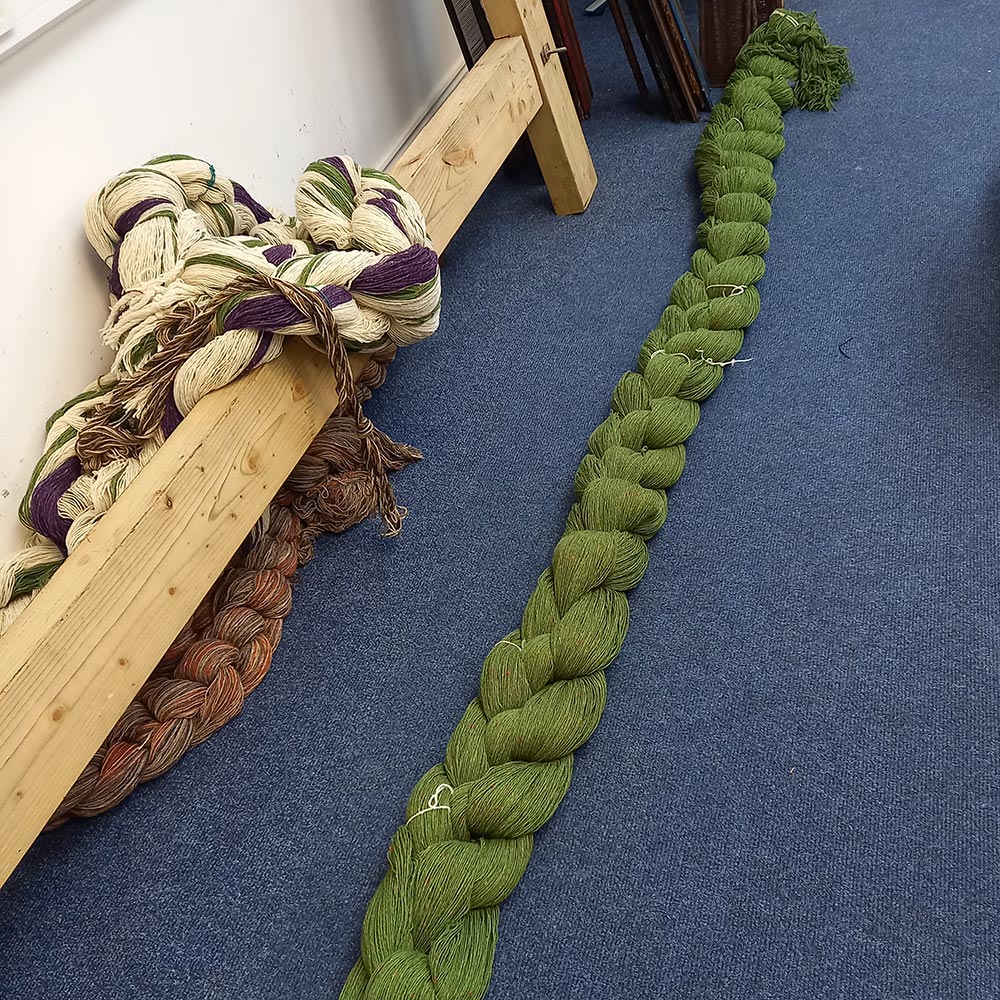
Beaming
The wound threads are transferred from the warping mechanism onto the loom's warp beam, ensuring even tension and alignment.
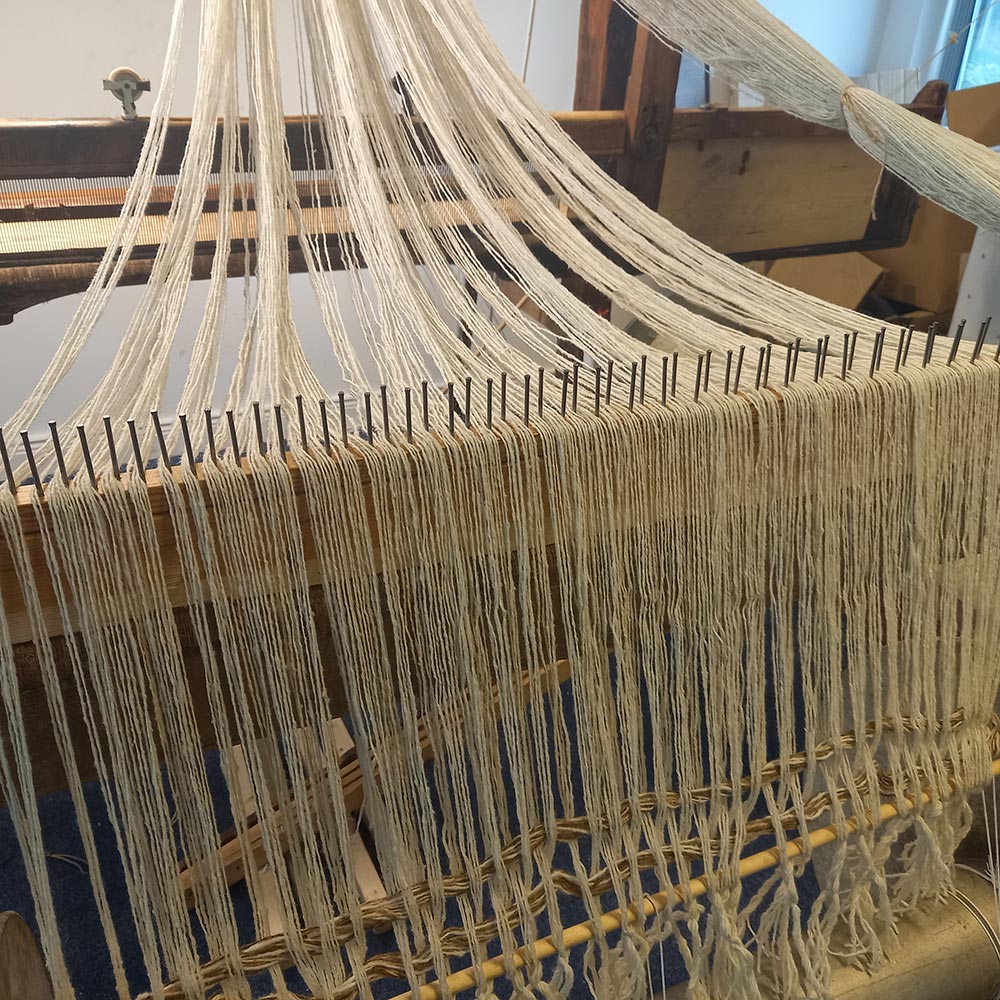
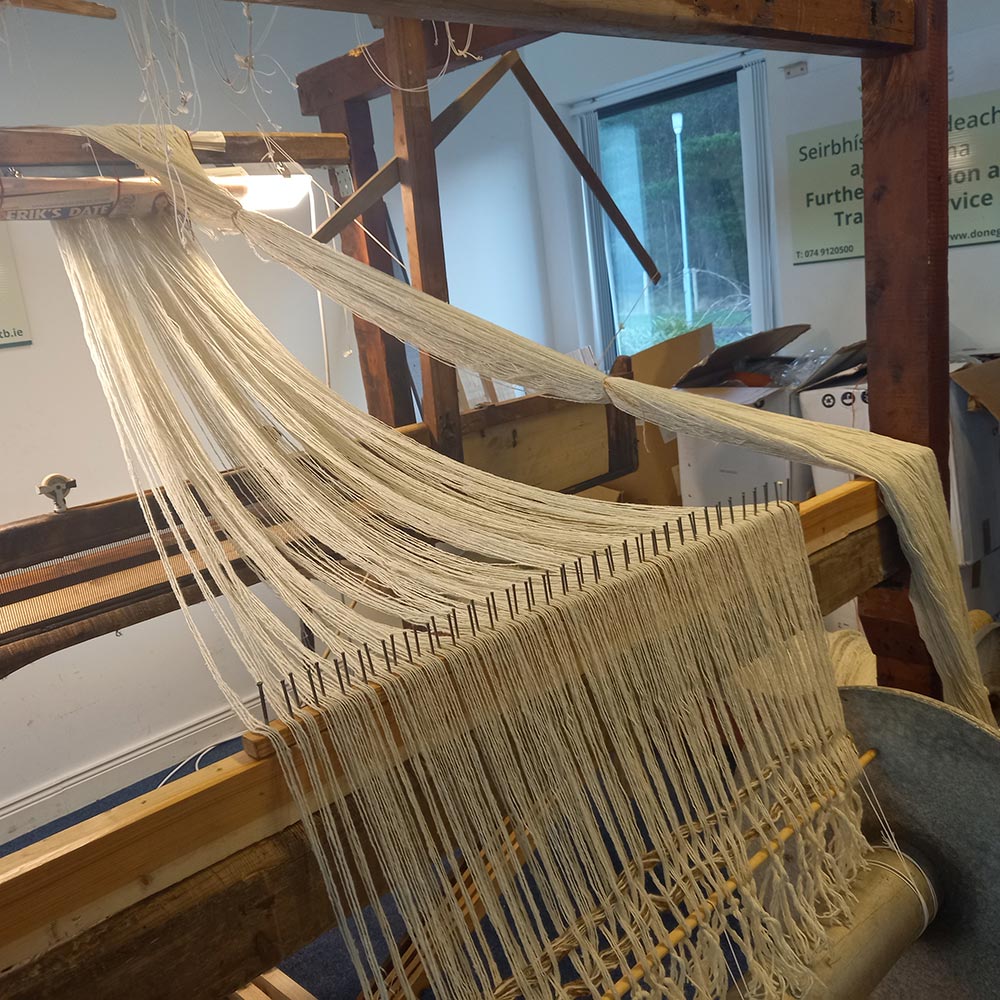
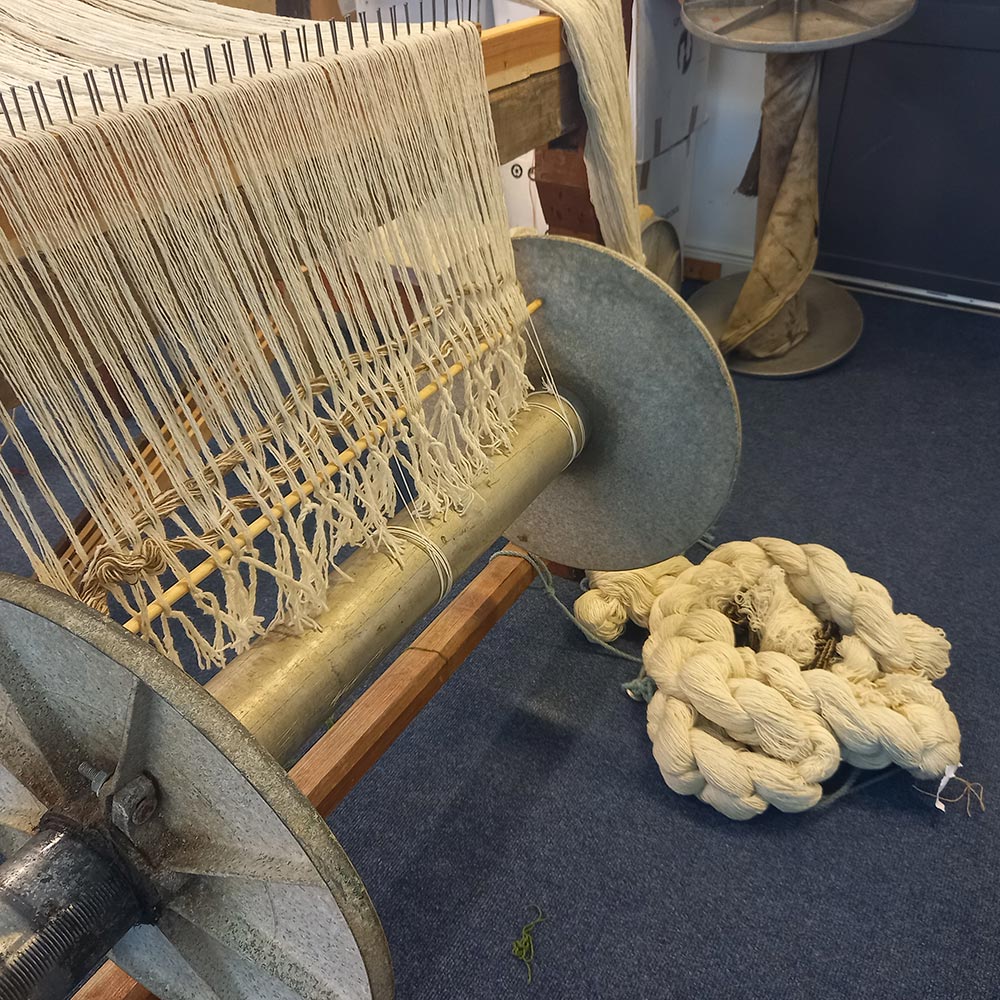
Threading the heddles
Heddles are thin wire or string loops with an eye in the centre, through which each warp thread passes. They are attached to shafts that move up and down to create the weaving pattern. The order in which the warp threads are passed through the heddles determines the weave pattern.
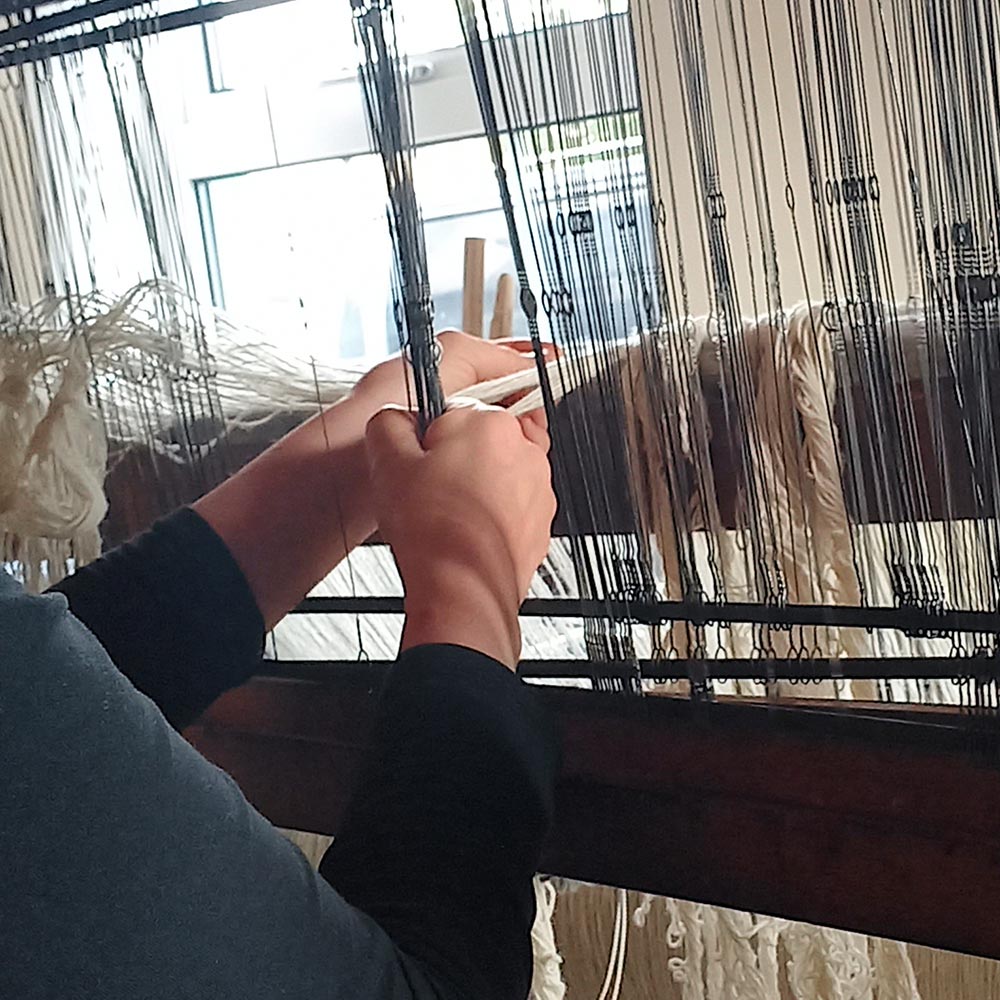
After drawing in the warp is passed through a reed. This sets the separation of the warp threads in the weave determining the looseness of the fabric and its final width.
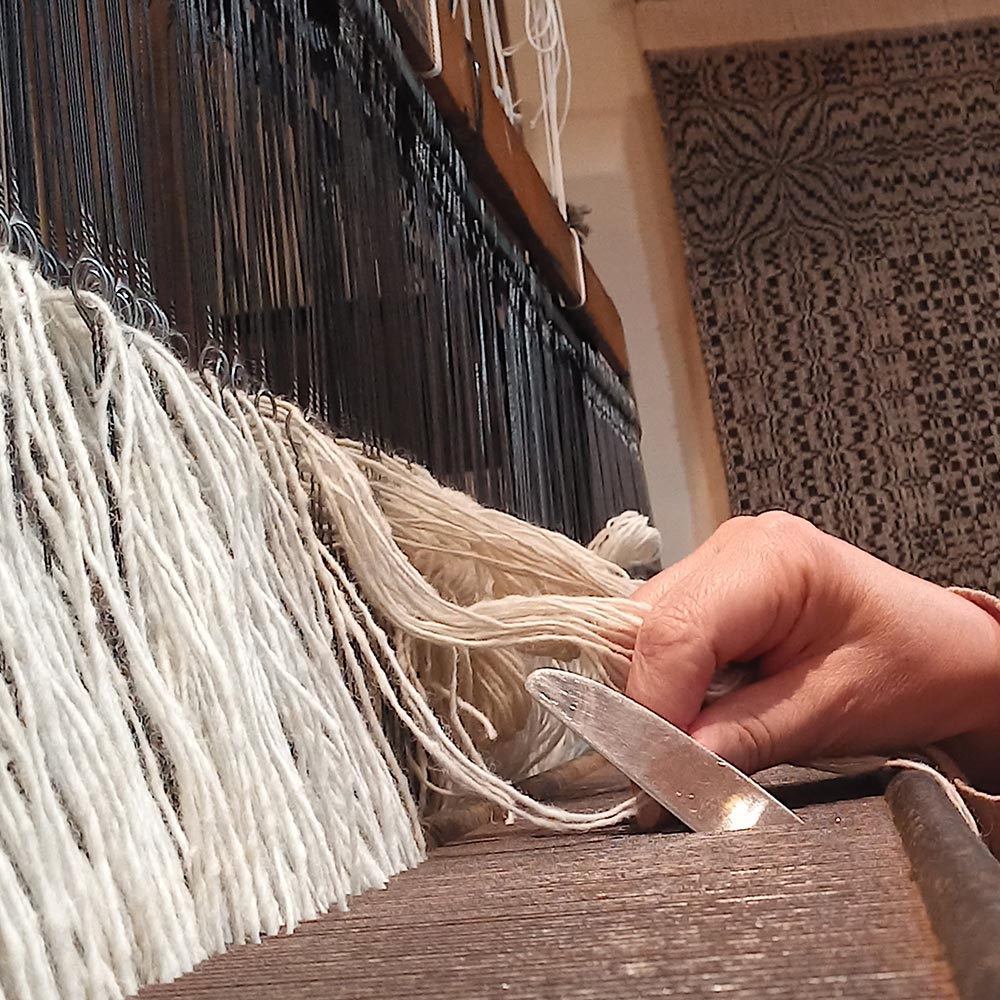
Attaching the warp to the push beam, the warp is tied to a rod which is in turn wrapped onto the cloth beam. The tension is kept consistent across the warp.
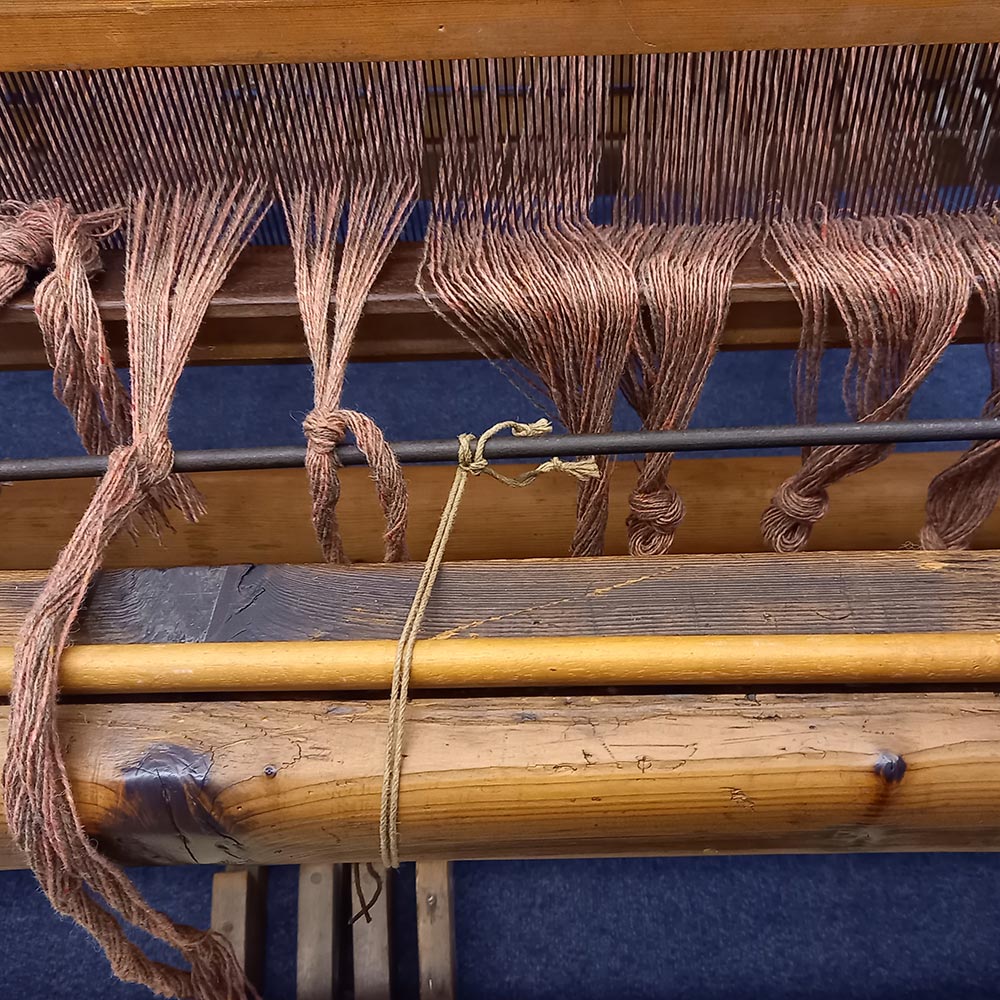
The weaver then uses treddles to raise and lower the heddles and pass the weft through the raised warp threads to create the pattern.
